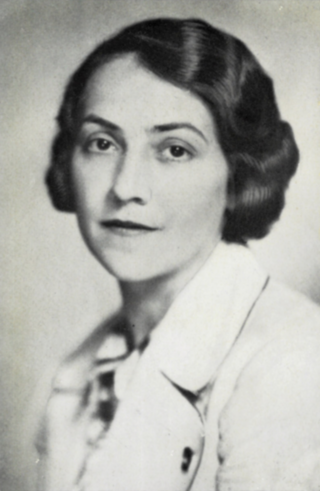Irene Leopoldine Harand (geb. Wedl)

Personalia
Born:
Died:
Profession:
Curriculum Vitae
Irene Wedl was born in Vienna, the third of four children of a Catholic father and a Protestant mother.
Her father, master painter Franz Wedl, was the owner of a medium-sized business. Her mother Sophie, née Markely, came from a Transylvanian Saxon family and came to Vienna as a young woman. After attending compulsory and secondary school, Irene Wedl completed two years of further education. In preparation for a middle-class life, she was taught French, good manners and housekeeping. On August 14, 1921, she married the Imperial and Royal officer Franz Harand (1885-1976) in the parish church of St. Elisabeth in the 4th district of Wieden. The marriage remains childless. Irene Harand, who loses a considerable part of her inheritance as a result of the war, initially works as a secretary, but gives up her job and her husband finds employment as a bank clerk. Supported by her husband, she became involved in voluntary work.
In the mid-1920s, Irene Harand met the socially committed Jewish lawyer Moriz Zalman, who helped victims of inflation free of charge and became her mentor and an important reference person. She worked as secretary in the 'Association of Small Pensioners and Savers in Austria', which he founded, and later also served as deputy chairwoman. She gained her first journalistic experience in the association's organ 'Die Welt am Morgen' and the 'Morgenpost'. In 1930, she founded the Austrian People's Party together with Zalman and functionaries from the small pensioners' association, which had no connection to today's Austrian People's Party (ÖVP). The "Austrian People's Party" is a bourgeois-liberal party that campaigns for economic security, compensation for war victims and the fight against class and racial hatred. The latter issue in particular was a unique selling point in the party landscape of the 1930s. Irene Harand, a convinced monarchist and Catholic, was for a long time close to the Christian Social Party (CSP). In the 1930 National Council elections, however, she stood as a candidate for the Austrian People's Party in some Viennese constituencies. She also acted as deputy chairman of the party.
Irene Harand, who began to focus more intensively on the topics of anti-Semitism and racism in the early 1930s, took a firm stand against anti-Jewish resentment. In 1933, she published 'So? or So?', an educational pamphlet against anti-Semitic prejudice. In 1935, she self-published 'Sein Kampf. Answer to Hitler'. In response to the exhibition 'The Eternal Jew' (1937), the Harand movement initiated a series of stamps with images of deserving Jewish personalities.
On the day of the invasion of Austria by the German Wehrmacht and the resulting demise of a free and independent Austria, Irene Harand was on a lecture tour in London and did not return to Austria. The National Socialists storm the office of the Harand movement and put a bounty of 100,000 Reichsmarks on Irene Harand's head; her books are publicly burned in Salzburg. Her husband managed to escape via Czechoslovakia and in September 1938 the couple left Europe for the USA from London. There they built a new life for themselves in New York City.
Irene Harand continued her fight against anti-Semitism and war in the United States of America. Together with other exiles, she founded the Austro-American Center and the Austrian-American League in 1939 and organized anti-war rallies, at which she also appeared as a speaker. Together with B'nai B'rith and Stephen Wise, she enables more than 100 Austrian Jews to enter the USA by organizing the necessary entry documents. An American edition of His Struggle. Answer to Hifler is distributed to all public libraries in the USA by the Anti-Defamation League during the Second World War.

In 1943, Irene Harand was instrumental in founding an institute for Jewish writers and artists who had been forced to leave Austria in 1938. This was later known as the Austrian Institute or Austrian Forum, which she headed as president in the last years of her life. Also in 1943, she became Chairwoman of the Women's Division of the Anti Nazi League' New York.
In New York, Irene and Moriz Harand experienced the liberation of Austria and the re-establishment of the Republic. In 1949, Irne Harand returned to post-war Austria for the first time; from the 1960s onwards, she made regular visits to her old homeland, but did not settle there permanently.
Citations
Wien.Geschichte.Wiki unter www.geschichtewiki.wien.gv.at/Irene_Harand
Wikipedia unter de.wikipedia.org/wiki/Irene_Harand
Matricula Online

Irene Harand
Righteous Among the Nations